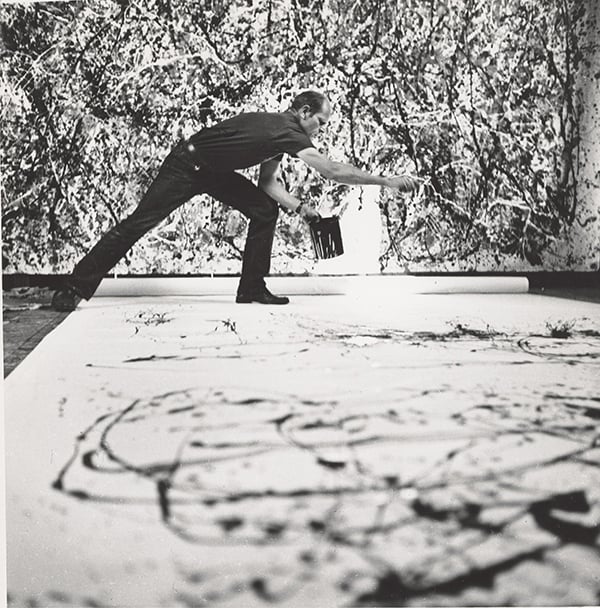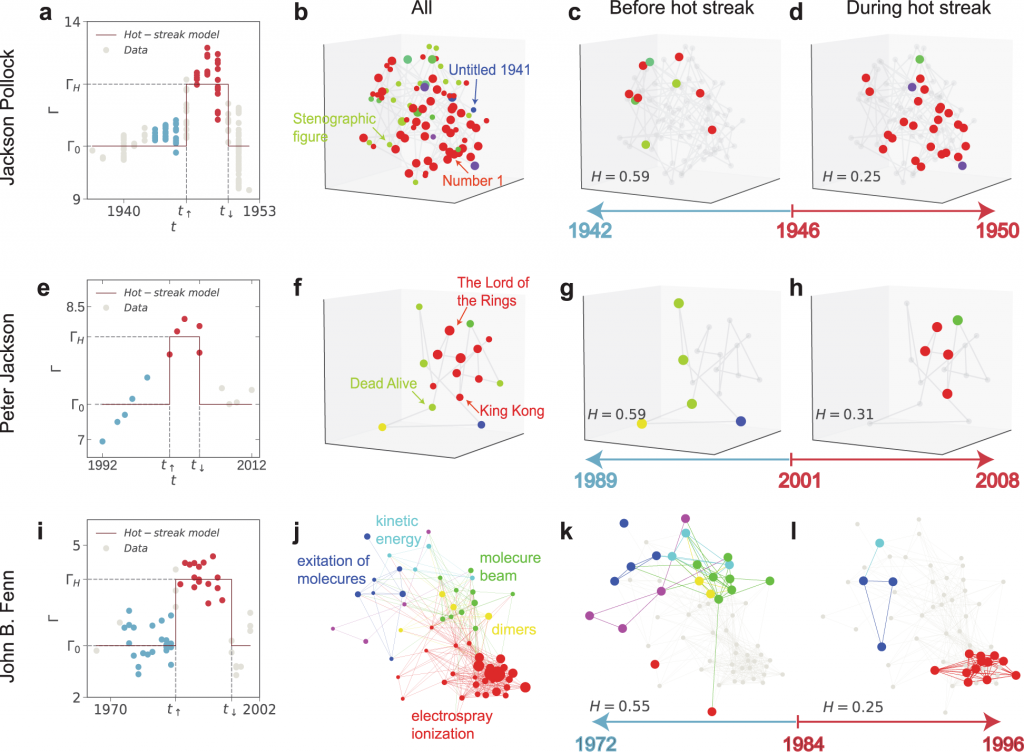Art World
What Causes a Creative Hot Streak? A New Study Found That It Often Involves These Two Habits
Jackson Pollock is one of three examples used to show how a hot streak manifests.

Jackson Pollock is one of three examples used to show how a hot streak manifests.

Is there a magic formula that can lead an artist to a “hot steak” of creativity? There just might be, says a new study from the Kellogg School of Management at Northwestern University.
The secret involves experimenting with a wide range of subjects, styles, and techniques before perfecting a specific area of one’s craft—what the authors describe as a mix of exploration and exploitation.
“Although exploration is considered a risk because it might not lead anywhere, it increases the likelihood of stumbling upon a great idea,” the study’s lead author, Dashun Wang, said in a statement. “By contrast, exploitation is typically viewed as a conservative strategy. If you exploit the same type of work over and over for a long period of time, it might stifle creativity. But, interestingly, exploration followed by exploitation appears to show consistent associations with the onset of hot streaks.”
Wang’s findings, published today in the journal Nature, sought to identify periods of intense creativity in the work of visual artists, as well as film directors and scientists. The team used image recognition algorithms to analyze data from 800,000 artworks from 2,128 artists, including Jackson Pollock, Frida Kahlo, and Vincent van Gogh. The rest of the study was based on Internet Movie Database (IMDb) data sets for 4,337 directors, and publications and citations on the Web of Science and Google Scholar for 20,040 scientists.

Creative trajectories and hot-streak dynamics: three exemplary careers. Data analyzing the work of Jackson Pollock, Peter Jackson, and John Fenn.
Pollock, who achieved widespread popular and critical success with his groundbreaking drip paintings from 1946 to 1950, is one of three creators singled out as examples in the paper. The others are director Peter Jackson, who famously made the “The Lord of the Rings” epic fantasy trilogy after experimenting in genres such as horror-comedy and biography, and John Fenn, who won the 2002 Nobel Prize in chemistry for his work with electrospray ionization, having previously studied numerous other topics.
The paper identified patterns in the creators’ work over time—changes in brushstrokes, plot points or casting decisions, or research topics. It noted the diversity both in the period leading up to a hot streak, which typically lasts about five years, and at other times in the subject’s career.
In all three fields, the trend tended toward a more diverse body of work in the period before a hot streak than at other points in time. Then, during the hot streak, the creators tended to continue to work in the same vein, suggesting “that individuals become substantially more focused on what they work on, reflecting an exploitation strategy during hot streak.”